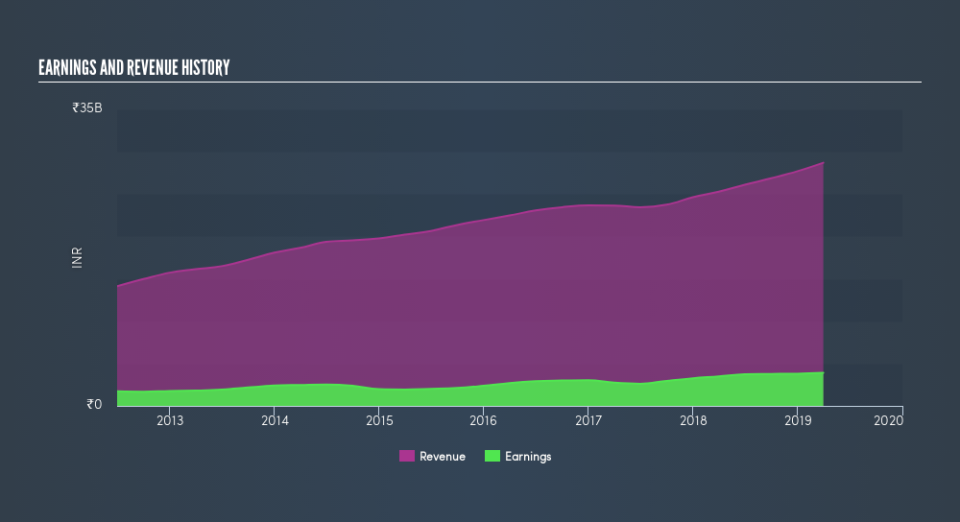Is Now The Time To Put Sanofi India (NSE:SANOFI) On Your Watchlist?

Want to participate in a short research study? Help shape the future of investing tools and you could win a $250 gift card!
For beginners, it can seem like a good idea (and an exciting prospect) to buy a company that tells a good story to investors, even if it completely lacks a track record of revenue and profit. But the reality is that when a company loses money each year, for long enough, its investors will usually take their share of those losses.
If, on the other hand, you like companies that have revenue, and even earn profits, then you may well be interested in Sanofi India (NSE:SANOFI). While that doesn't make the shares worth buying at any price, you can't deny that successful capitalism requires profit, eventually. In comparison, loss making companies act like a sponge for capital - but unlike such a sponge they do not always produce something when squeezed.
See our latest analysis for Sanofi India
How Fast Is Sanofi India Growing?
As one of my mentors once told me, share price follows earnings per share (EPS). It's no surprise, then, that I like to invest in companies with EPS growth. We can see that in the last three years Sanofi India grew its EPS by 13% per year. That's a good rate of growth, if it can be sustained.
I like to take a look at earnings before interest and (EBIT) tax margins, as well as revenue growth, to get another take on the quality of the company's growth. Sanofi India maintained stable EBIT margins over the last year, all while growing revenue 14% to ₹29b. That's a real positive.
The chart below shows how the company's bottom and top lines have progressed over time. For finer detail, click on the image.
In investing, as in life, the future matters more than the past. So why not check out this free interactive visualization of Sanofi India's forecast profits?
Are Sanofi India Insiders Aligned With All Shareholders?
As a general rule, I think it worth considering how much the CEO is paid, since unreasonably high rates could be considered against the interests of shareholders. For companies with market capitalizations between ₹70b and ₹223b, like Sanofi India, the median CEO pay is around ₹39m.
The Sanofi India CEO received ₹34.9m in compensation for the year ending December 2018. That comes in below the average for similar sized companies, and seems pretty reasonable to me. While the level of CEO compensation isn't a huge factor in my view of the company, modest remuneration is a positive, because it suggests that the board keeps shareholder interests in mind. It can also be a sign of good governance, more generally.
Is Sanofi India Worth Keeping An Eye On?
As I already mentioned, Sanofi India is a growing business, which is what I like to see. Not only that, but the CEO is paid quite reasonably, which makes me feel more trusting of the board of directors. So all in all I think it's worth at least considering for your watchlist. Of course, just because Sanofi India is growing does not mean it is undervalued. If you're wondering about the valuation, check out this gauge of its price-to-earnings ratio, as compared to its industry.
Although Sanofi India certainly looks good to me, I would like it more if insiders were buying up shares. If you like to see insider buying, too, then this free list of growing companies that insiders are buying, could be exactly what you're looking for.
Please note the insider transactions discussed in this article refer to reportable transactions in the relevant jurisdiction
We aim to bring you long-term focused research analysis driven by fundamental data. Note that our analysis may not factor in the latest price-sensitive company announcements or qualitative material.
If you spot an error that warrants correction, please contact the editor at editorial-team@simplywallst.com. This article by Simply Wall St is general in nature. It does not constitute a recommendation to buy or sell any stock, and does not take account of your objectives, or your financial situation. Simply Wall St has no position in the stocks mentioned. Thank you for reading.

